september 10, 2002 state water resources control board board meeting session--division of water quality september 19, 2002 ite
September 10, 2002
STATE WATER RESOURCES CONTROL BOARD
BOARD MEETING SESSION--DIVISION OF WATER QUALITY
SEPTEMBER 19, 2002
ITEM 6
SUBJECT
CONSIDERATION OF A RESOLUTION APPROVING AN AMENDMENT TO THE WATER
QUALITY CONTROL PLAN FOR THE LOS ANGELES REGION INCORPORATING A DRY
WEATHER TOTAL MAXIMUM DAILY LOAD FOR BACTERIA AT SANTA MONICA BAY
BEACHES
DISCUSSION
On January 24, 2002 the Los Angeles Regional Water Quality Control
Board
(Los Angeles Regional Board) adopted Resolution No. 02-004 (attached)
amending its
Water Quality Control Plan (Basin Plan) to incorporate a Total Maximum
Daily Load (TMDL) for bacteria at Santa Monica Bay beaches during dry
weather.
The current Basin Plan was approved by the State Water Resources
Control Board (SWRCB) on November 17, 1994 and by the Office of
Administrative Law (OAL) on February 23, 1995. Chapter 3 of the Basin
Plan contains water quality objectives for coliform bacteria, which
set forth the concentrations of fecal coliform that shall not be
exceeded in waters designated for water contact recreation (REC-1). On
October 25, 2001, the Los Angeles Regional Board adopted Resolution
No. 01-018 to update the current Basin Plan objectives for bacteria.
On July 18, 2002, SWRCB approved the revised bacterial objectives.
This TMDL uses a multi-part numeric target based on the bacterial
water quality objectives adopted in Resolution No. 01-018. These
bacterial water quality objectives are set forth in Chapter 3 of the
Basin Plan and are incorporated into the present TMDL.
In 1996, the Los Angeles Regional Board identified Santa Monica Bay as
being a water quality limited water body pursuant to section 303(d) of
the Federal Clean Water Act (CWA). That is, some of the designated
water quality standards (REC-1 beneficial use and water quality
objectives) are not being attained. The impairment is due to excessive
levels of microbial pathogens. Because Santa Monica Bay was listed as
impaired for pathogens under section 303(d), the CWA requires that a
TMDL be established for this water body at levels necessary to attain
water quality standards.
Along Santa Monica Bay, 44 beaches were listed on the State’s 1998 CWA
section 303(d) impaired water body list [303 (d) list] because the
total and/or fecal coliform water quality standards were exceeded
based on shoreline monitoring data, or there were one or more beach
closures during the period assessed. Fourteen of the 44 beaches were
listed as impaired because the fecal coliform standard of 400
organisms per 100 milliliters (ml) was exceeded in more than 15
percent of samples and/or the total coliform standard of 10,000
organisms per 100 ml was exceeded in more than 20 percent of samples.
Forty-two of the beaches listed as impaired on the 1998 303(d) list
experienced beach closures, indicating a failure to meet the “water
contact recreation” beneficial use. (In addition to beach closures
from bacterial contamination, closures have also been due to oil
spills and other causes.) Four storm drains that discharge to Santa
Monica Bay beaches are listed on the 1998 303(d) list as impaired due
to coliform.
As a result of extensive public comments received on the wet weather
portion of the TMDL, the Los Angeles Regional Board has separated the
dry weather and wet weather components of the bacterial TMDL. The
present TMDL deals with bacterial contamination during dry weather
periods. The Los Angeles Regional Board expects to consider a separate
TMDL for wet weather bacterial contamination later this year.
The Los Angeles Regional Board has prepared this TMDL to address the
documented bacterial water quality impairments at 44 coastal beaches
from the Los Angeles/Ventura County line to the northwest to Outer
Cabrillo Beach, just south of the Palos Verdes Peninsula. The Santa
Monica Bay beaches TMDL establishes a six-year plan for reducing the
number of dry weather days when REC-1 bacterial objectives are
exceeded at the Bay’s beaches. The TMDL is expressed in terms of days
of exceedance of the single-sample bacterial standards adopted in
Resolution No. 01-018.
The first phase of the TMDL implementation is to be achieved within
three years and addresses the summer dry weather period, as defined by
Assembly Bill 411 (April 1 to October 31). To fully protect public
health during this critical high-use period, no days of exceedance of
the single-sample bacterial standards are permitted at any beach. This
is consistent with historical shoreline monitoring data for 1996-2000,
which show no exceedances for the reference beach (Leo Carillo State
Beach, a beach with a largely natural drainage area) during the
summer.
The second phase to be achieved within six years addresses winter dry
weather, as defined by Assembly Bill 411 (November 1 to March 31).
During winter dry weather periods, the number of allowable exceedance
days is set to ensure that (1) bacterial water quality is as good as
that of the reference beach, and (2) no degradation of existing water
quality occurs. During winter dry weather periods, a maximum number of
days of exceedance is specified for each beach site.
The present TMDL is based upon bacterial water quality objectives
adopted by the
Los Angeles Regional Board in Resolution No. 01-018 and approved by
SWRCB on
July 18, 2002. These objectives must be approved by OAL and by the
U.S. Environmental Protection Agency (USEPA) before becoming
effective. SWRCB’s approval of the Santa Monica Bay beaches
dry-weather bacteria TMDL Basin Plan amendment is therefore proposed
to be made contingent on approval by OAL and USEPA of the bacterial
objectives adopted by the Los Angeles Regional Board in Resolution No.
01-018.
POLICY ISSUE
Should SWRCB:
1.
Approve the amendment to the Los Angeles Regional Board Basin Plan
to incorporate a dry weather TMDL for bacteria at Santa Monica Bay
beaches, contingent on OAL and USEPA approval of the bacterial
objectives adopted by the Los Angeles Regional Board in Resolution
No. 01-018?
2.
Authorize the Executive Director or designee to transmit the
amendment and administrative record for this action to OAL and the
TMDL to USEPA for approval?
FISCAL IMPACT
=============
Los Angeles Regional Board and SWRCB staff work associated with or
resulting from this action can be accomplished within budgeted
resources.
RWQCB IMPACT
Yes, Los Angeles Regional Board.
STAFF RECOMMENDATION
That SWRCB:
1.
Approves the amendment to the Los Angeles Regional Board Basin
Plan to incorporate a dry weather TMDL for bacteria at Santa
Monica Bay beaches, contingent on OAL and USEPA approval of the
bacterial objectives adopted by the Los Angeles Regional Board in
Resolution No. 01-018.
2.
Authorizes the Executive Director or designee to transmit the
amendment and administrative record for this action to OAL and the
TMDL to USEPA for approval.
Tables 7-4.2a and b
STATE WATER RESOURCES CONTROL BOARD
RESOLUTION NO. 2002-
APPROVING AN AMENDMENT TO THE WATER QUALITY CONTROL PLAN FOR THE LOS
ANGELES REGION INCORPORATING A DRY WEATHER TOTAL MAXIMUM DAILY LOAD
FOR BACTERIA AT SANTA MONICA BAY BEACHES
WHEREAS:
1.
The Los Angeles Regional Water Quality Control Board (Los Angeles
Regional Board) adopted a revised Water Quality Control Plan
(Basin Plan) for the
Los Angeles Region on June 13, 1994 that was approved by the
State Water Resources Control Board (SWRCB) on November 17, 1994 and
by the
Office of Administrative Law (OAL) on February 23, 1995.
2.
On October 25, 2001, the Los Angeles Regional Board adopted
Resolution No. 01-018 amending the Basin Plan to update the
bacterial objectives for waters designated for water contact
recreation.
3.
On January 24, 2002, the Los Angeles Regional Board adopted
Resolution
No. 02-004 (attached) amending the Basin Plan to incorporate a dry
weather Total Maximum Daily Load (TMDL) for bacteria at Santa Monica
Bay Beaches. This TMDL is based on the bacterial water quality
objectives adopted by the Los Angeles Regional Board in Resolution No.
01-018.
4.
On July 18, 2002, SWRCB approved Los Angeles Regional Board
Resolution No. 01- 018.
5.
The water quality objectives adopted by the Los Angeles Regional
Board in Resolution No. 01-018 must be approved by OAL and by the
U.S. Environmental Protection Agency (USEPA) before becoming
effective. They have not yet been approved and are therefore not
yet in effect.
6.
The Los Angeles Regional Board followed appropriate procedures to
satisfy the environmental documentation requirement of the
California Environmental Quality Act (PL 92-500 and PL 95-217) and
other State laws and regulations. The
Los Angeles Regional Board has found that adoption of these amendments
will not
have a significant adverse effect on the environment.
7.
A Basin Plan amendment does not become effective until approved by
SWRCB and until the regulatory provisions are approved by OAL.
8.
A TMDL must be approved by USEPA.
9.
The numeric targets in this TMDL are not water quality objectives
and do not create new bases for enforcement against dischargers
apart from the water quality objectives they translate. The
targets merely establish the bases through which load allocations
and wasteload allocations (WLAs) are calculated. WLAs are only
enforced for a dicharger’s own discharges, and then only in the
context of it National Pollutant Discharge Elimination System
(NPDES) permit, which must be consistent with the assumptions and
requirements of the WLA.
10.
If a municipal permittee, through diversions, source reduction, or
other means, eliminates
discharges from the municipal separate storm sewer system (MS4) to the
Santa Monica
Beaches (waters of the United States) that would otherwise be subject
to the requirements of an NPDES permit, that permittee is not
responsible under the MS4 permit for exceedances of water quality
standards at the Santa Monica Beaches. The receiving-water limitations
contained in municipal storm water permits only apply to the extent
there is actually a discharge from the MS4; however, an MS4 permit
does place obligations on the permittees to ensure that any best
management practices (including diversions) are properly maintained
and functioning. Notwithstanding the aforesaid, apart from this TMDL
and the MS4 permit municipalities may nonetheless be subject to other
statutory requirements respecting the health of the beaches under
their control, including, e.g., A.B. 411 (Stats. 1997, ch. 765),
irrespective of any discharge subject to the Clean Water Act, and if
appropriate, A.B. 538 (Stats. 1999, ch. 488).
11. The Regional Board has the authority to authorize compliance
schedules through the basin
planning process. In this Basin Plan amendment, the Regional Board
establishes a schedule for implementation that affords the municipal
storm water NPDES dischargers up to three or six years, respectively
for summer dry and winter dry weather, to implement this TMDL.
THEREFORE BE IT RESOLVED THAT:
SWRCB:
1.
Approves the amendment to the Los Angeles Regional Board Basin
Plan to incorporate a dry weather TMDL for bacteria at Santa
Monica Bay beaches, contingent on OAL and USEPA approval of the
bacterial objectives adopted by the Los Angeles Regional Board in
Resolution No. 01-018.
2.
Authorizes the Executive Director or designee to transmit the
amendment and administrative record for this action to OAL and the
TMDL to USEPA for approval.
CERTIFICATION
The undersigned, Clerk to the Board, does hereby certify that the
foregoing is a full, true, and correct copy of a resolution duly and
regularly adopted at a meeting of the State Water Resources Control
Board held on September 19, 2002.
_____________________________________
Maureen Marché
Clerk to the Board
------------------
State of California
California Regional Water Quality Control Board, Los Angeles Region
RESOLUTION NO. 02-004
=====================
January 24, 2002
================
Amendment to the Water Quality Control Plan (Basin Plan) for the Los
Angeles Region to Incorporate a Dry Weather Total Maximum Daily Load
for Bacteria at Santa Monica Bay Beaches
WHEREAS, the California Regional Water Quality Control Board, Los
Angeles Region, finds that:
1.
The federal Clean Water Act (CWA) requires the California Regional
Water Quality Control Board, Los Angeles Region (Regional Board)
to develop water quality objectives which are sufficient to
protect beneficial uses for each water body found within its
region.
2.
A consent decree between the U.S. Environmental Protection Agency
(USEPA), Heal the Bay, Inc. and BayKeeper, Inc. was approved on
March 22, 1999. This court order directs the USEPA to complete
Total Maximum Daily Loads (TMDLs) for all the Los Angeles Region’s
impaired waters within 13 years. A schedule was established in the
consent decree for the completion of 29 TMDLs within 7 years,
including completion of a TMDL to reduce bacteria at Santa Monica
Bay beaches by March 2002. The remaining TMDLs will be scheduled
by Regional Board staff within the 13-year period.
3.
The elements of a TMDL are described in 40 CFR 130.2 and 130.7 and
section 303(d) of the CWA, as well as in USEPA guidance documents
(e.g., USEPA, 1991). A TMDL is defined as “the sum of the
individual waste load allocations for point sources and load
allocations for nonpoint sources and natural background” (40 CFR
130.2). Regulations further stipulate that TMDLs must be set at
“levels necessary to attain and maintain the applicable narrative
and numeric water quality standards with seasonal variations and a
margin of safety that takes into account any lack of knowledge
concerning the relationship between effluent limitations and water
quality” (40 CFR 130.7(c)(1)). The provisions in 40 CFR 130.7 also
state that TMDLs shall take into account critical conditions for
stream flow, loading and water quality parameters.
4.
Upon establishment of TMDLs by the State or USEPA, the State is
required to incorporate the TMDLs along with appropriate
implementation measures into the State Water Quality Management
Plan (40 CFR 130.6(c)(1), 130.7). The Water Quality Control Plan
for the Los Angeles Region (Basin Plan), and applicable statewide
plans, serve as the State Water Quality Management Plans governing
the watersheds under the jurisdiction of the Regional Board.
5.
Santa Monica Bay is located in Los Angeles County, California. The
proposed TMDL addresses documented bacteriological water quality
impairments at 44 beaches from the Los Angeles/Ventura County
line, to the northwest, to Outer Cabrillo Beach, just south of the
Palos Verdes Peninsula.
6.
The Regional Board’s goal in establishing the above-mentioned TMDL
is to reduce the risk of illness associated with swimming in
marine waters contaminated with human sewage and other sources of
bacteria. Local and national epidemiological studies compel the
conclusion that there is a causal relationship between adverse
health effects, such as gastroenteritis, and recreational water
quality, as measured by bacteria indicator densities.
7.
Interested persons and the public have had reasonable opportunity
to participate in review of the amendment to the Basin Plan.
Efforts to solicit public review and comment include staff
presentations to the Santa Monica Bay Restoration Project’s Bay
Watershed Council and Technical Advisory Committee between May
1999 and October 2001 and creation of a Steering Committee in July
1999 to provide input on scientific and technical components of
the TMDL with participation by the Southern California Coastal
Water Research Project, City of Los Angeles, County of Los Angeles
Department of Public Works, County Sanitation Districts of Los
Angeles County, Heal the Bay, and Santa Monica Bay Restoration
Project. In addition, a draft of the TMDL for bacteria at Santa
Monica Bay beaches was released for public comment on November 9,
2001; a Notice of Hearing and Notice of Filing were published and
circulated 45 days preceding Board action; Regional Board staff
responded to oral and written comments received from the public;
and the Regional Board held a public hearing on January 24, 2002
to consider adoption of the TMDL.
8.
On October 25, 2001, the Regional Board adopted Resolution
2001-018 establishing revised bacteriological water quality
objectives for the Water Contact Recreation (REC-1) beneficial
use, and the TMDL is intended to accompany and to implement the
revised water quality objectives. While the Regional Board has
approved the water quality objective change, the change is not yet
effective because the State Water Resources Control Board, the
Office of Administrative Law, and the USEPA have not yet approved
the revised water quality objective.
9.
The amendment is consistent with the State Antidegradation Policy
(State Board Resolution No. 68-16), in that the changes to water
quality objectives (i) consider maximum benefits to the people of
the state, (ii) will not unreasonably affect present and
anticipated beneficial use of waters, and (iii) will not result in
water quality less than that prescribed in policies. Likewise, the
amendment is consistent with the federal Antidegradation Policy
(40 CFR 131.12).
10.
The basin planning process has been certified as functionally
equivalent to the California Environmental Quality Act
requirements for preparing environmental documents (Public
Resources Code, Section 21000 et seq.) and as such, the required
environmental documentation and CEQA environmental checklist have
been prepared.
11.
The proposed amendment results in no potential for adverse effect
(de minimis finding), either individually or cumulatively, on
wildlife.
12.
The regulatory action meets the “Necessity” standard of the
Administrative Procedures Act, Government Code, section 11353,
subdivision (b).
13.
The Basin Plan amendment incorporating a TMDL for bacteria at
Santa Monica Bay beaches must be submitted for review and approval
by the State Water Resources Control Board (State Board), the
State Office of Administrative Law (OAL), and the USEPA. The Basin
Plan amendment will become effective upon approval by OAL and
USEPA. A Notice of Decision will be filed.
THEREFORE, be it resolved that pursuant to Section 13240 and 13242 of
the Water Code, the Regional Board hereby amends the Basin Plan as
follows:
1.
Pursuant to sections 13240 and 13242 of the California Water Code,
the Regional Board, after considering the entire record, including
oral testimony at the hearing, hereby adopts the amendment to
Chapter 7 the Water Quality Control Plan for the Los Angeles
Region to incorporate the elements of the Santa Monica Bay Beaches
Bacteria TMDL for dry weather as set forth in Attachment A hereto.
2.
The Executive Officer is directed to forward copies of the Basin
Plan amendment to the State Board in accordance with the
requirements of section 13245 of the California Water Code.
2.
The Regional Board requests that the State Board approve the Basin
Plan amendment in accordance with the requirements of sections
13245 and 13246 of the California Water Code and forward it to OAL
and the USEPA.
2.
The Basin Plan amendment set forth in Attachment A shall only
become effective if the water quality objectives revised by
Regional Board Resolution 2001-018, or equivalent water quality
objectives, have been approved by the State Board, OAL, and USEPA,
and are consistent with the TMDL.
2.
If during its approval process the State Board or OAL determines
that minor, non-substantive corrections to the language of the
amendment are needed for clarity or consistency, the Executive
Officer may make such changes, and shall inform the Board of any
such changes.
2.
The Executive Officer is authorized to sign a Certificate of Fee
Exemption.
I, Dennis A. Dickerson, Executive Officer, do hereby certify that the
foregoing is a full, true, and correct copy of a resolution adopted by
the California Regional Water Quality Control Board, Los Angeles
Region, on January 24, 2002.
/s/
__________________
Dennis A. Dickerson
Executive Officer
Proposed Amendment to the Water Quality Control Plan – Los Angeles
Region to incorporate the
==================================================================
Santa Monica Bay Beaches Bacteria TMDL
Proposed for adoption by the California Regional Water Quality Control
Board, Los Angeles Region on January 24, 2002.
Amendments:
Table of Contents
Add:
Chapter 7. Total Maximum Daily Loads (TMDLs) Summaries
7-4 Santa Monica Bay Beaches Bacteria TMDL*
List of Figures, Tables and Inserts
Add:
Chapter 7. Total Maximum Daily Loads (TMDLs)
Tables
7-4 Santa Monica Bay Beaches Bacteria TMDL
7-4.1. Santa Monica Bay Beaches Bacteria TMDL (Dry Weather Only):
Elements
7-4.2a. Santa Monica Bay Beaches Bacteria TMDL (Dry Weather Only):
Implementation Schedule
7-4.2b. Santa Monica Bay Beaches Bacteria TMDL (Dry Weather Only):
Implementation Schedule
7-4.3. Santa Monica Bay Beaches Bacteria TMDL (Dry Weather Only):
Significant Dates
Chapter 7. Total Maximum Daily Loads (TMDLs) Summaries
Santa Monica Bay Beaches Bacteria TMDL (Dry Weather Only)*
This TMDL was adopted by:
The Regional Water Quality Control Board on January 24, 2002.
The State Water Resources Control Board on [Insert Date].
The Office of Administrative Law on [Insert Date].
The U.S. Environmental Protection Agency on [Insert Date].
The following table summarizes the key elements of this TMDL.
Table 7-4.1. Santa Monica Bay Beaches Bacteria TMDL (Dry Weather
Only): Elements
Element
Key Findings and Regulatory Provisions
Problem Statement
Elevated bacterial indicator densities are causing impairment of the
water contact recreation (REC-1) beneficial use at many Santa Monica
Bay (SMB) beaches. Swimming in waters with elevated bacterial
indicator densities has long been associated with adverse health
effects. Specifically, local and national epidemiological studies
compel the conclusion that there is a causal relationship between
adverse health effects and recreational water quality, as measured by
bacterial indicator densities.
Numeric Target
==============
(Interpretation of the numeric water quality objective, used to
calculate the waste load allocations)
===============================================================
The TMDL has a multi-part numeric target based on the bacteriological
water quality objectives for marine water to protect the water contact
recreation use. These targets are the most appropriate indicators of
public health risk in recreational waters.
These bacteriological objectives are set forth in Chapter 3 of the
Basin Plan, as amended by the Regional Board on October 25, 2001. The
objectives are based on four bacterial indicators and include both
geometric mean limits and single sample limits. The Basin Plan
objectives are as follows:
1.
Rolling 30-day Geometric Mean Limits
a.
Total coliform density shall not exceed 1,000/100 ml.
b.
Fecal coliform density shall not exceed 200/100 ml.
c.
Enterococcus density shall not exceed 35/100 ml.
2.
Single Sample Limits
a.
Total coliform density shall not exceed 10,000/100 ml.
b.
Fecal coliform density shall not exceed 400/100 ml.
c.
Enterococcus density shall not exceed 104/100 ml.
d.
Total coliform density shall not exceed 1,000/100 ml, if the ratio
of fecal-to-total coliform exceeds 0.1.
The targets apply throughout the year. The compliance point for the
targets is the wave wash1, where there is a freshwater outlet (i.e.,
storm drain or creek) to the beach, or at ankle depth at beaches
without a freshwater outlet.
The geometric mean targets may not be exceeded at any time. For the
single sample targets, each existing shoreline monitoring site is
assigned an allowable number of exceedance days for two time periods
(summer dry weather and winter dry weather as defined in Table
7-4.2a). (A separate amendment will address the allowable number of
wet weather exceedance days.)
The allowable number of exceedance days is set such that (1)
bacteriological water quality at any site is at least as good as at a
designated reference site within the watershed and (2) there is no
degradation of existing shoreline bacteriological water quality.
Source Analysis
With the exception of isolated sewage spills, dry weather urban runoff
conveyed by storm drains and creeks is the primary source of elevated
bacterial indicator densities to SMB beaches during dry weather.
Limited natural runoff and groundwater may also potentially contribute
to elevated bacterial indicator densities during winter dry weather.
This is supported by the finding that historical monitoring data from
the reference beach indicate no exceedances of the single sample
targets during summer dry weather and on average only three percent
exceedance during winter dry weather.
Loading Capacity
Studies show that bacterial degradation and dilution during transport
from the watershed to the beach do not significantly affect bacterial
indicator densities at SMB beaches. Therefore, the loading capacity is
defined in terms of bacterial indicator densities, which is the most
appropriate for addressing public health risk, and is equivalent to
the numeric targets, listed above.
Waste Load Allocations
======================
Waste load allocations are expressed as the number of sample days at a
shoreline monitoring site that may exceed the single sample targets
identified under “Numeric Target.” Waste load allocations are
expressed as allowable exceedance days because the bacterial density
and frequency of single sample exceedances are the most relevant to
public health protection.
For each shoreline monitoring site and corresponding subwatershed, the
allowable number of exceedance days is set for two time periods. These
two periods are:
1.
summer dry weather (April 1 to October 31), and
2.
winter dry weather (November 1 to March 31).
The allowable number of exceedance days for a shoreline monitoring
site for each time period is based on the lesser of two criteria (1)
exceedance days in the designated reference system and (2) exceedance
days based on historical bacteriological data at the monitoring site.
This ensures that shoreline bacteriological water quality is at least
as good as that of a largely undeveloped system and that there is no
degradation of existing shoreline bacteriological water quality.2All
responsible jurisdictions and responsible agencies3 within a
subwatershed are jointly responsible for complying with the allowable
number of exceedance days for each associated shoreline monitoring
site identified in Table 7-4.2a below.
The three Publicly Owned Treatment Works (POTWs)4 discharging to Santa
Monica Bay are each given individual WLAs of zero (0) days of
exceedance during both summer dry weather and winter dry weather.
Implementation
==============
This TMDL will be implemented in two phases over a 6-year period. The
regulatory mechanisms used to implement the TMDL will include
primarily the Los Angeles County Municipal Storm Water NPDES Permit,
the Caltrans Storm Water Permit, the three NPDES permits for the
POTWs, and the authority vested in the Executive Officer via 13267 of
the Porter-Cologne Water Quality Control Act.
Within 3 years of the effective date of the TMDL, summer dry-weather
allowable exceedance days and the rolling 30-day geometric mean
targets must be achieved. Within 6 years of the effective date, winter
dry-weather allowable exceedance days and the rolling 30-day geometric
mean targets must be achieved.
Margin of Safety
================
WLAs of zero days of exceedance during the summer include an implicit
margin of safety. The WLAs of a maximum of three days of exceedance
during winter dry weather include an implicit margin of safety because
the maximum allowable days of exceedance are based on samples
collected 50 yards downcurrent of the freshwater outlet at the
reference beach. Findings from a bacterial dispersion study of
selected freshwater outlets show that there is typically significant
dilution between the freshwater outlet, the wave wash (the compliance
point), and a point 50 yards downcurrent.
Seasonal Variations and Critical Conditions
===========================================
Seasonal variations are addressed by developing separate waste load
allocations for two time periods (summer dry weather and winter dry
weather) based on public health concerns and observed natural
background levels of exceedance of bacterial indicators.
The critical period for this dry weather bacteria TMDL is during
winter months, when historic shoreline monitoring data for the
reference beach indicate that the single sample bacteria objectives
are exceeded on average 3% of the dry weather days sampled.
Note: The complete staff report for the TMDL is available for review
upon request.
Table 7-4.3. Santa Monica Bay Beaches Bacteria TMDL (Dry Weather
Only): Significant Dates
Date
Action
120 days after the effective date of the TMDL
Responsible jurisdictions and responsible agencies must submit
coordinated shoreline monitoring plan(s), including a list of new
sites or sites relocated to the wave wash at which time responsible
jurisdictions and responsible agencies will select between daily and
weekly shoreline sampling.
120 days after the effective date of the TMDL
Responsible jurisdictions and responsible agencies must identify and
provide documentation on 342 potential discharges to Santa Monica Bay
beaches listed in Appendix C of the TMDL Staff Report dated January
11, 2002. Documentation must include a Report of Waste Discharge
(ROWD) where necessary.
Responsible jurisdictions and responsible agencies must identify and
provide documentation on potential discharges to the Area of Special
Biological Significance (ASBS) in northern Santa Monica Bay from
Latigo Point to the County line.
Cessation of the discharges into the ASBS shall be required in
conformance with the California Ocean Plan.
2 years after effective date of TMDL
Re-open TMDL to re-evaluate allowable winter dry weather exceedance
days based on additional data on bacterial indicator densities in the
wave wash, a re-evaluation of the reference system selected to set
allowable exceedance levels, and a re-evaluation of the reference year
used in the calculation of allowable exceedance days.
3 years after effective date of the TMDL
Achieve compliance with allowable exceedance days as set forth in
Table 7-4.2a and rolling 30-day geometric mean targets during summer
dry weather (April 1 to October 31).
6 years after effective date of the TMDL
Achieve compliance with allowable exceedance days as set forth in
Table 7-4.2a and rolling 30-day geometric mean targets during winter
dry weather (November 1 to March 31).
1 The wave wash is defined as the point at which the storm drain or
creek empties and the effluent from the storm drain initially mixes
with the receiving ocean water.
2 In order to fully protect public health, no exceedances are
permitted at any shoreline monitoring location during summer dry
weather (April 1 to October 31). In addition to being consistent with
the two criteria, waste load allocations of zero (0) exceedance days
are further supported by the fact that the California Department of
Health Services has established minimum protective bacteriological
standards – the same as the numeric targets in this TMDL – which, when
exceeded during the period April 1 to October 31, result in posting a
beach with a health hazard warning (California Code of Regulations,
title 17, section 7958).
3 For the purposes of this TMDL, “responsible jurisdictions and
responsible agencies” includes: (1) local agencies that are
responsible for discharges from a publicly owned treatment works to
the Santa Monica Bay watershed or directly to the Bay, (2) local
agencies that are permittees or co-permittees on a municipal storm
water permit, (3) local or state agencies that have jurisdiction over
a beach adjacent to Santa Monica Bay, and (4) the California
Department of Transportation pursuant to its storm water permit.
4 Hyperion Wastewater Treatment Plant, Joint Water Pollution Control
Plant, and Tapia Wastewater Reclamation Facility.
-3-
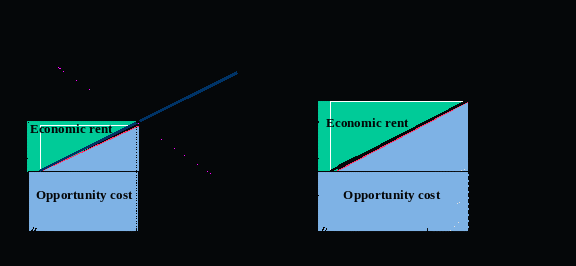 SOLUTIONS TO PROBLEMS CHAPTER 14 1A THE WAGE RATE
SOLUTIONS TO PROBLEMS CHAPTER 14 1A THE WAGE RATE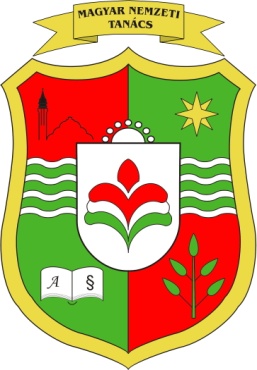 MAGYAR NEMZETI TANÁCS TUDOMÁNYÜGYI STRATÉGIA 20142020 SZABADKA 2014 FEBRUÁR
MAGYAR NEMZETI TANÁCS TUDOMÁNYÜGYI STRATÉGIA 20142020 SZABADKA 2014 FEBRUÁR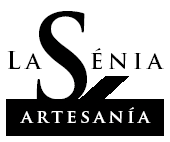 BASES PER LA III FIRA D’ARTESANIA DE LA FUSTA
BASES PER LA III FIRA D’ARTESANIA DE LA FUSTA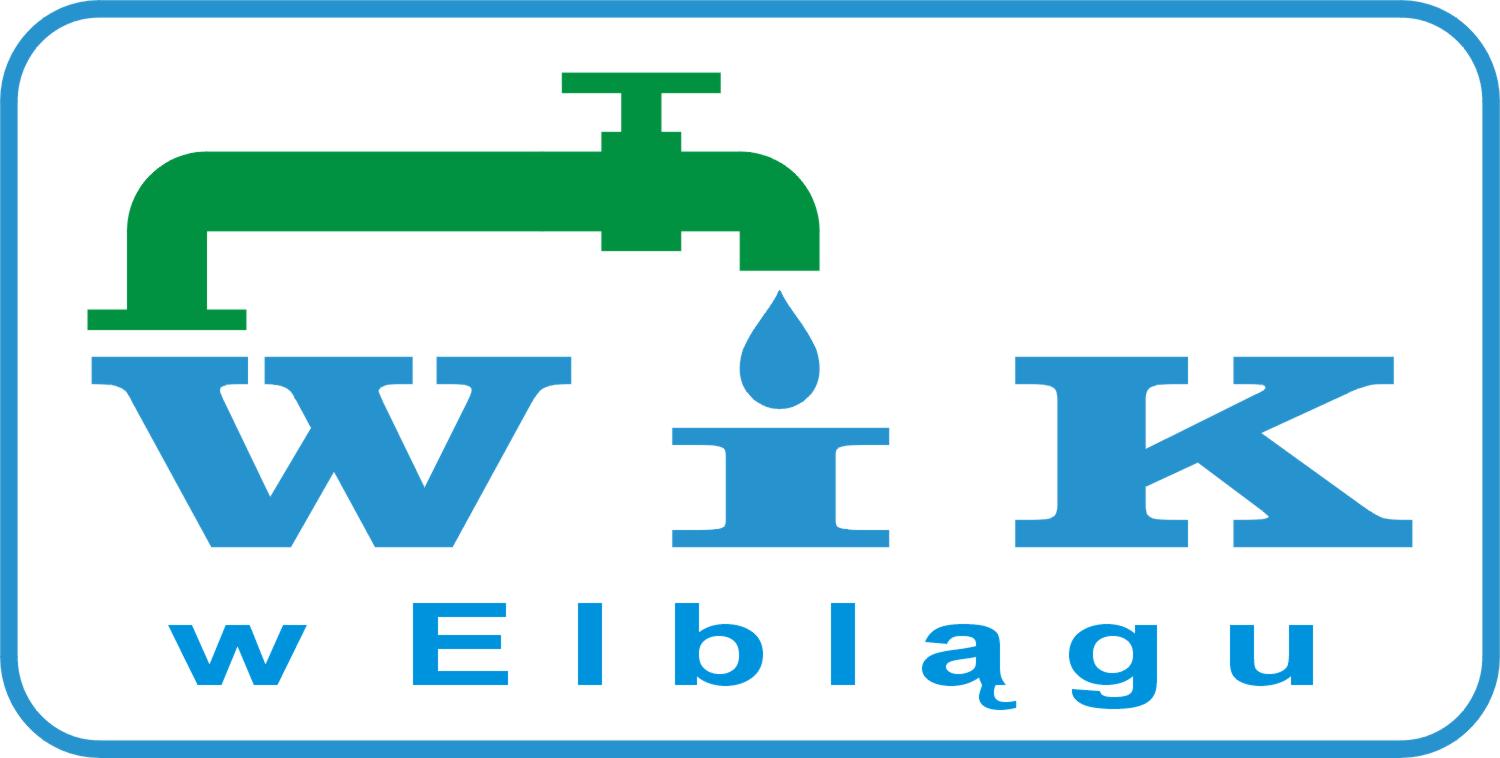 ELBLĄSKIE PRZEDSIĘBIORSTWO WODOCIĄGÓW I KANALIZACJI SPÓŁKA Z OGRANICZONĄ ODPOWIEDZIALNOŚCIĄ
ELBLĄSKIE PRZEDSIĘBIORSTWO WODOCIĄGÓW I KANALIZACJI SPÓŁKA Z OGRANICZONĄ ODPOWIEDZIALNOŚCIĄ 1cr_t_adjuntos_270
1cr_t_adjuntos_270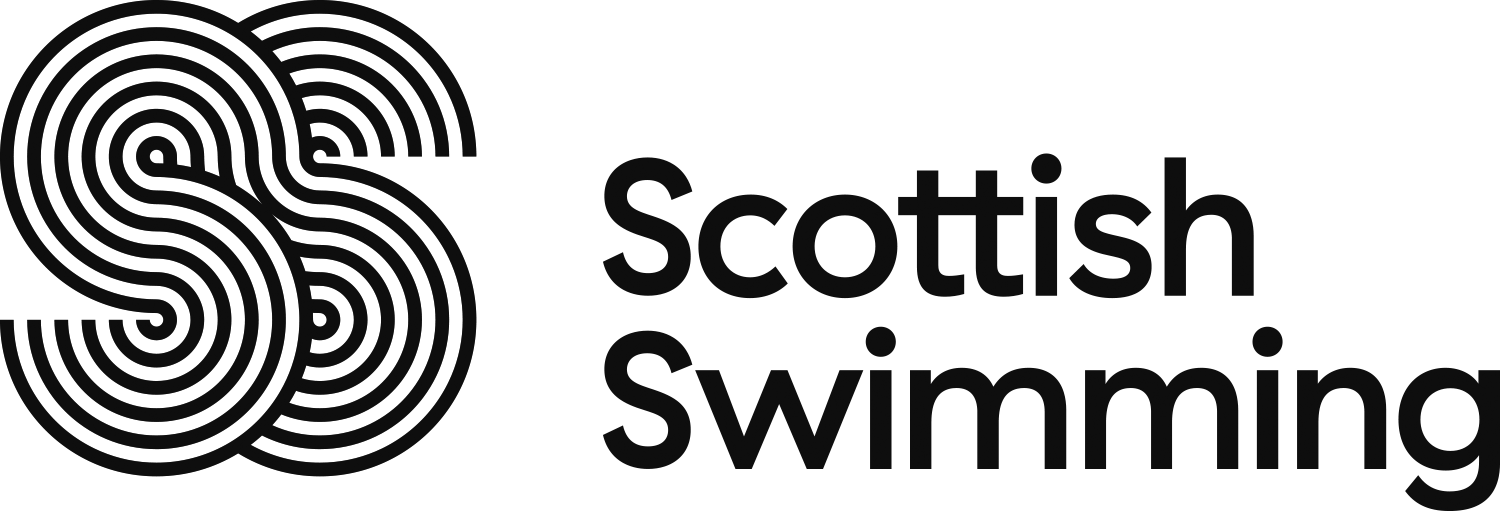 GALA CONVENER ROLE DESCRIPTOR PURPOSE TO ORGANISE OR USE
GALA CONVENER ROLE DESCRIPTOR PURPOSE TO ORGANISE OR USE LABORATORY PH CONDUCTIVITY SALINITY METER CPC511 USER’S
LABORATORY PH CONDUCTIVITY SALINITY METER CPC511 USER’S 26 CAPITULO 2 2 ANTECEDENTES LA EMPRESA
26 CAPITULO 2 2 ANTECEDENTES LA EMPRESA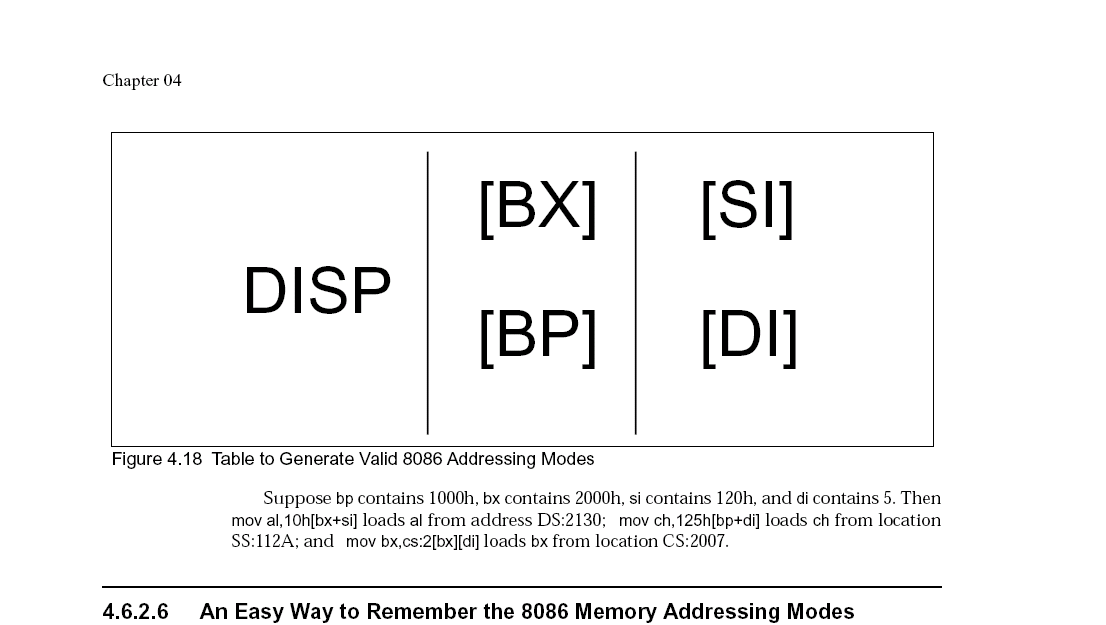 EE2007 SUPPLEMENTARY MATERIALS PREPARED BY PAN YAN ~~~~~~~~~~~~~~~~~~~~~~~~~~~~~~~~~~~~~~~~~~~~~~~~~~~~~~~~~~~~~~ A
EE2007 SUPPLEMENTARY MATERIALS PREPARED BY PAN YAN ~~~~~~~~~~~~~~~~~~~~~~~~~~~~~~~~~~~~~~~~~~~~~~~~~~~~~~~~~~~~~~ A EVALUACIÓN FECHA EJERCICIO Nº 1 CALCULA SOLUCIÓN EJERCICIO Nº
EVALUACIÓN FECHA EJERCICIO Nº 1 CALCULA SOLUCIÓN EJERCICIO Nº ESCUDO(S) DE ARMAS BANDERA(S) EMBLEMA(S) DE ESTADO
ESCUDO(S) DE ARMAS BANDERA(S) EMBLEMA(S) DE ESTADO (IMIĘ I NAZWISKO ABSOLWENTA) (KIERUNEK SYSTEM STUDIÓW)
(IMIĘ I NAZWISKO ABSOLWENTA) (KIERUNEK SYSTEM STUDIÓW)